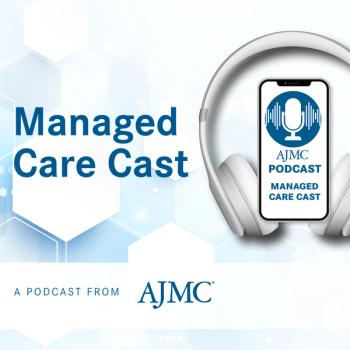
Key End Points for Providers to Consider With New Multiple Myeloma Therapies: Hearn Jay Cho, MD, PhD
As novel multiple myeloma therapies enter the relapsed and refractory treatment landscape, safety is a key consideration, says Hearn Jay Cho, MD, PhD.
The
Hearn Jay Cho, MD, PhD, chief medical officer at the Multiple Myeloma Research Foundation, shared insights on what end points are important for clinicians to consider as novel therapies enter the treatment landscape and how clinicians can manage safety signals associated with belantamab mafodotin.
This transcript has been lightly edited.
Transcript
What do you see as the most meaningful end points for health care providers when evaluating a new myeloma therapy, and how does belantamab mafodotin fare in that regard?
In the current environment, where there's very good success with first-line therapy, with the efficacy of new agents coming in initially in the relapsed/refractory setting, everybody is focused on things like overall response rate and progression-free survival. Those are critical end points, but what's becoming more and more obvious is that we also have to pay attention to safety issues. Adverse events that are reported with some of these newer agents, as powerful as they are, become serious considerations because they impact the ability of providers to deliver the care, and they limit the application in certain patient populations. In other words, very elderly or frail patients, patients who have comorbid conditions that may have overlapping toxicities with the expected side effects of the agents. I think the community in general is becoming much more sensitive to safety issues in addition to the obvious response rate and progression-free survival.
Are there any notable safety signals that providers should be aware of when utilizing belantamab mafodotin?
The major safety issue with [belantamab mafodotin], first and foremost, is ocular toxicity. Corneal ulcerations are common with this agent, and there's a well-described regimen of having an eye exam prior to initiation of treatment, before every additional treatment, and so forth. Despite that, this was an issue that became an important topic of conversation at the ODAC [Oncologic Drugs Advisory Committee]. And I think that it would be fair to say that there was fair criticism that the dosing regimen that was proposed had a very high risk of ocular toxicity. The other major toxicity is cytopenias. The combination, particularly with the IMiD [immunomodulatory] drugs, is of concern because you're concerned about overlapping toxicities. If you have 2 agents that cause cytopenias, are you going to get critical cytopenias when you combine them?
Those are the 2 issues that came up at the ODAC, and they're important questions that need to be addressed. I would emphasize that this is against a backdrop of the efficacy data. [Belantamab mafodotin], as a single agent and in combination, is effective. There's no question. I think that both the response rate data and the progression-free survival data were quite favorable. However, the toxicity data was also of great concern. In the risk-benefit equation of any given therapy, what's the potential for benefit? What are the potential risks of this? This makes it somewhat less favorable for [belantamab mafodotin]. It's really important to understand, since we know that the agent is effective, can we give it in a way that is less toxic?
There's a lot of interest in understanding whether the dosing interval makes a difference, so there have been a number of small trials that have already been conducted where the dosing has been spaced out to 8 or 12 weeks, as opposed to every 3 weeks, and at least with the early data—we don't have published data to go by—the sense is that that may be a safer way to deliver the drug. There are a number of ongoing clinical trials, both company-sponsored trials and other trials, that are investigating 8- and 12-week dosing intervals in combination with different agents. And if you think about it, that could be really very advantageous for that same population that we were talking about earlier if you could have a regimen where a patient could come into the office every 2 to 3 months and get one infusion, and the rest of the regimen is pills that they can take at home. That's a great advantage for patients who live far away from their doctor's office, far away from a hospital, etc, so I think that this is an important question that we need to answer.
Reference
McNulty R. FDA approves belantamab mafodotin combos for relapsed or refractory multiple myeloma. AJMC®. October 23, 2025. Accessed November 26, 2025.
Newsletter
Stay ahead of policy, cost, and value—subscribe to AJMC for expert insights at the intersection of clinical care and health economics.









































